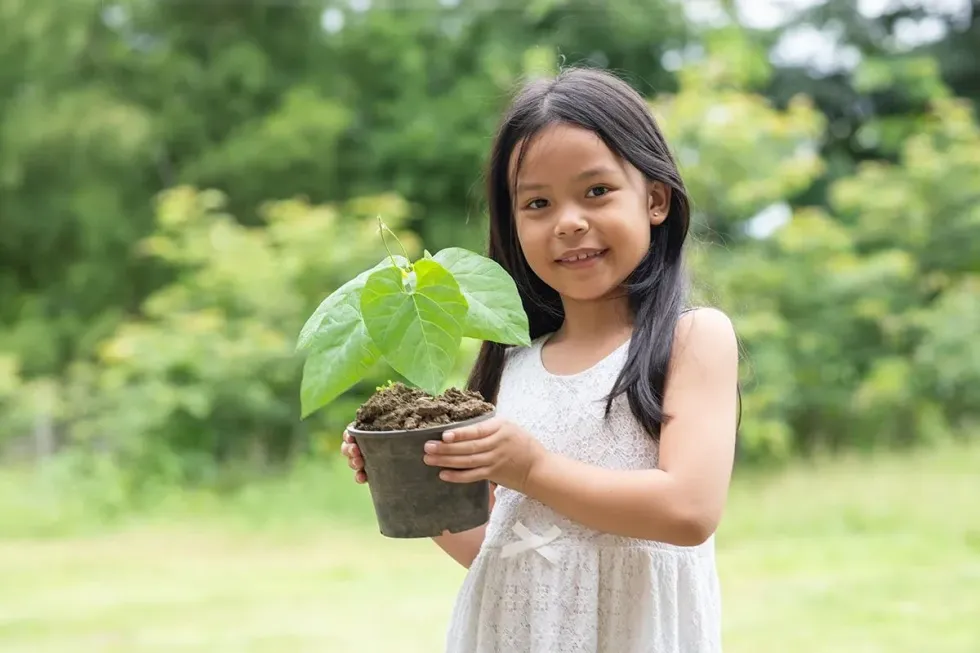Image © jcomp, under a Creative Commons license.
The circle of life moves us all – humans, animals and plants alike – but how much do you remember about how it actually works?
Learning about plant life is one of those great subjects where science can be backed up by endless real-world examples. But if your kids' inquisitive questions are getting harder to answer as they grow older, don't worry!
Why do daffodils pop up in the park every year? And why are bees always hovering around grandma’s rhododendrons? It's all to do with the life cycle of a plant and the knowledge to answer these questions and more can be found in our handy guide below.
In primary school, children will be taught how to identify, name and describe plants during Key Stage 1 (KS1) science lessons. In Key Stage 2 (KS2) science, they will learn about how they grow, their habitats, the different parts of a flower, plant life cycles, flowering plants and more.
In this free resource, we'll focus on what primary-age children will be learning about the life cycle of plants, from seeds to flowering plants and beyond.
What Is The Life Cycle Of A Plant?
The 'plant life cycle' refers to the ways in which millions of plants are born, grow, reproduce and die without human intervention each year. Of course, the entire plant kingdom is vast and complex, so we can't speak for it all, but we'll stick to the basic principles here.
How many stages there are in the life cycle of a plant depends on how it reproduces. This can be sexual or asexual.

Image © yanadjana, under a Creative Commons license.
Sexual Reproduction
This is the life cycle process that flowering plants follow, and it involves two 'parent' plants producing a genetically different plant.
The five stages in a flowering plant's life cycle are:
1. Seed: Plant life starts with a single seed.
2. Germination: The seed germinates in soil when given the right levels of oxygen, moisture, sunlight and heat. It grows roots and eventually produces a stem, leaves and a flower.
3. Pollination: When the plant is fully grown, its flowers produce pollen. This is carried by insects, animals, the wind, water, or even humans, onto other flowers. Older children could learn that pollen is produced by the male part of the flower, called the stamens.
4. Fertilisation: When the pollen reaches another flower, it travels to the female part of the flower (known as the ovary or pistil) and fertilises its egg cells. This process produces new seeds.
5. Dispersal: The new seeds get carried away by animals or on the wind. Return to step one, and you should eventually get a germination and a new life.

Image © jat306, under a Creative Commons license.
Daisies scattered across a grassy area could be used as an example of how flowering plants spread naturally.
For older children, you can explain that most flowering plants (though not all of them) have both male and female parts inside one flower.
Also note that flower petals are a way for flowering plants to attract insects like bees, the brighter and bolder the better.
You can see why this is described as a life cycle. It neatly loops around, as you can see in many illustrated resources. However, you will find that the reproduction of non-flowering plants can look very different.
Asexual Reproduction
Now we come to the plants that can reproduce without any fertilisation occurring. There is only one parent, and the new plant is genetically identical to the original: a clone, rather than a child.
There are various ways a plant can reproduce asexually. Here are a few, with examples, though a primary-aged child is unlikely to be tested on these in detail.
Bulbs: Remember those daffodils we mentioned? They're an interesting example of a plant that can follow a sexual or an asexual reproductive process.
As well as producing pollen like other flowering plants, daffodils can produce bulbs which remain under the ground. The bulbs store up food and nutrients that can grow into a new plant the following year, hence why you'll find daffodils returning years on end even when they've not been replanted.
Tubers: This is the thick part of the underground stem on plants such as a potato plant. It produces buds from which new plant shoots can grow.
Spores: Non-flowering plants, such as ferns, mosses and conifers, grow from spores that can be created by the adult plant without the need for a partner. These are so small and lightweight that they are easily carried by the wind, and given the right conditions will settle and form new plants.
Runners: Runners, like strawberry and spider plants, have thin stems that grow horizontally across the soil's surface, putting down roots to form new plants.

Image © yaoinlove, under a Creative Commons license.
Testing Knowledge
Here are some questions you can ask a primary-aged child to test their understanding of the life cycle of a plant (we've included the answers in case you find yourself needing a refresher).
Name three reasons flowers are important to the life cycle of a flowering plant? They produce pollen, attract insects, and (once fertilised) produce new seeds.
What are the two main forms of plant reproduction? Sexual and asexual.
What are the stages a flowering plant goes through in order to sexually reproduce? Germination, pollination, fertilisation and dispersal.
How does a plant move from the pollination to fertilisation stage? Its pollen is carried by insects, animals, the wind or another method onto another flower.
What is the main feature of asexual reproduction? The plant can reproduce on its own, without a partner, and the plants it creates are a clone of it.











